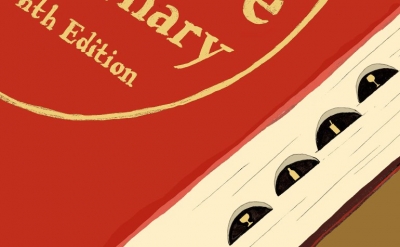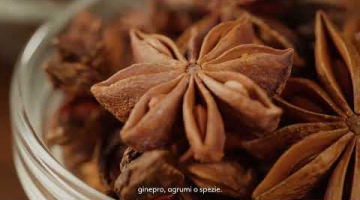The words we use to describe the experience of drinking are often part of a hyper-localized vocabulary—a calling card for ex-pats in a foreign place. Regan Hofmann on how we understand and relate through drinking terms.
e first time I asked someone in New York to pick me up “a mickey of gin,” all I got was a puzzled stare. The 375 milliliter flask-shaped bottle, which is used to hold the sort of cheap booze one might slip into a jacket pocket and nurse inconspicuously, is as ubiquitous in liquor stores here as in my hometown of Vancouver, BC, so I knew the format wasn’t the problem. Turns out, nobody calls it amickey in New York.
As an ex-pat Canadian, these sorts of cultural crossed wires happen constantly. But when it comes to talking about booze, nearly everyone has his or her own story of regional idiom gone wild. Michael Russell, restaurant critic for The Oregonian, recalls exhorting friends in Berkeley, California to drink up with “To the neck!” a rallying cry for the young and inebriated. In Boston, friends describe the (highly illegal, not-at-all-recommended) road soda, the beer that comes with you in the car—meaning, quite literally, one for the road. “In the South, they’re much more metaphorical,” says Paul Dickson, Guinness record holder for the most synonyms of a single word (nearly 3,000; for “drunk”), which are published in his book Intoxerated: The Definitive Drinker’s Dictionary. And so you get terms like moonshine, a downright beautiful name for what can be a truly frightful drink.
What is it about drinking that inspires such hyper-local, specialized vocabulary? Lexicographers have been giddily documenting the language of being drunk for centuries, all the way back to Benjamin Franklin’s Drinker’s Dictionary in 1737, “gather’d wholly from the modern Tavern-Conversation of Tiplers.” (Gems includecrump-footed and pidgeon-eyed.) But while being drunk is covered, few have made a study of how we talk about getting there.
To a certain extent, this is because drunkenness is the fun part, as Dickson explains in the introduction to his book. “The condition…invites words implying folly, foolishness, and self-inflicted dementia. The reason there are so many words for drunk is that people get drunk for different reasons, and it affects them in different ways.” At one party, every person in attendance can use a different term to describe his particular state of inebriation—and at least two-thirds of those terms would be hilarious.
But the act of drinking is a communal one, and it’s from communal activities that shared languages evolve. Linguists debate the Sapir-Whorf hypothesis, a theory that claims that the way you think about the world is determined by the language you speak—that two cultures coexisting in the same place would have two completely different experiences because they describe the world around them using different words. “We see and hear and otherwise experience very largely as we do because the language habits of our community predispose certain choices of interpretation,” wrote Sapir.
The experience of finding something familiar in a foreign place touches a deep, animal nerve in all of us. Regional bars of every flavor kit up with local team jerseys, maps and other geographic tchotchkes to exploit that feeling. Small-production liquors with limited distribution areas act as a secret handshake—like Malört for Chicagoans, or Lone Star for Texans. But it’s the words we use that are the ex-pat’s real signal call.
Though there’s plenty to argue with Sapir and Whorf about (the theory was conceived in the 1920s—not the greatest time for cultural sensitivity—and ignores some basic counterexamples, like deaf and hearing communities that routinely coexist without friction), their theory as applied to the language of drinking is correct. As teens begin to explore the world of alcohol, they’re dependent upon what they’ve learned from older peers or parents to place their experience in context—including the words they use to talk about it.
There are pragmatic terms, those that, while unusual, are easily deciphered as purely descriptive. In the Great Plains, there’s three-two beer, a form of low-alcohol beer available in even the most Puritanical corners of Utah. It clocks in at—you guessed it—3.2% ABV, and so “three-two” is just a handy catchall that distinguishes it from the rest of the beer kingdom, which is subject to stricter regulations. In Canada, a two-four is a 24-bottle case of beer. It’s a simple term, and yet so ubiquitous that Victoria Day weekend—a long weekend which falls at the end of May—has been renamed informally “May Two-Four,” for the amount of beer one ought to consume over those three days off.
There are also historically informed terms that speak to a region’s past, like booting,or procuring liquor for underage kids. It’s shorthand for “bootlegging” and is in use on the West Coast, where the Gold Rush’s lawless attitude toward alcohol carried on long after the rest of the continent got civilized. Born as they are of particular regional values, these vocabularies also feed back into the way we think about drinking: Regions like the American South that talk about drinking in euphemism place a greater value on politeness and keeping up appearances; Boston’s road sodas place Massachusetts in the top tier of U.S. states for drunk driving arrests.
The experience of finding something familiar in a foreign place touches a deep, animal nerve in all of us. Regional bars of every flavor kit up with local team jerseys, maps and other geographic tchotchkes to exploit that feeling. Small-production liquors with limited distribution areas act as a secret handshake—like Malört for Chicagoans, or Lone Star for Texans. But it’s the words we use that are the ex-pat’s real signal call.
The irony is that as we use these terms to remind ourselves of where we used to live. We create echo communities in the places we are now, circles around us that absorb our idiosyncrasies and pepper them back out into the world at large. Spend enough time with the Irish and you’ll soon find yourself asking “Where’s the craic?” when you’re looking for the party on Friday night. You may never know exactly what it means—or even how to spell craic—but as we choose our own communities, our linguistic experience expands to match them. Even more remarkably, it’s a vocabulary that can only be passed along face-to-face; with all the other facets of contemporary life that are increasingly global, you can only talk the drinker’s talk if you’ve been in the same room together.
The last time I slipped and referred to a mickey to someone who wasn’t in the echo chamber, I relayed the story to my fiancé later that day. A native New Yorker, he asked, incredulously, “Well, what do they call it?” After several years with me, he could no longer remember a time when those bottles had another name. His understanding of the drinking world had become a little bit bigger. Sapir and Whorf would be proud.
thanks to original post http://punchdrink.com/articles/the-language-of-drinking/
















